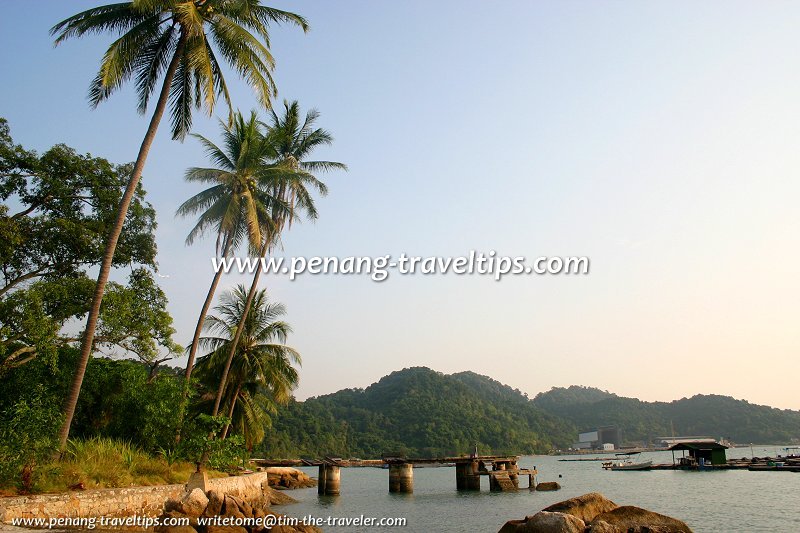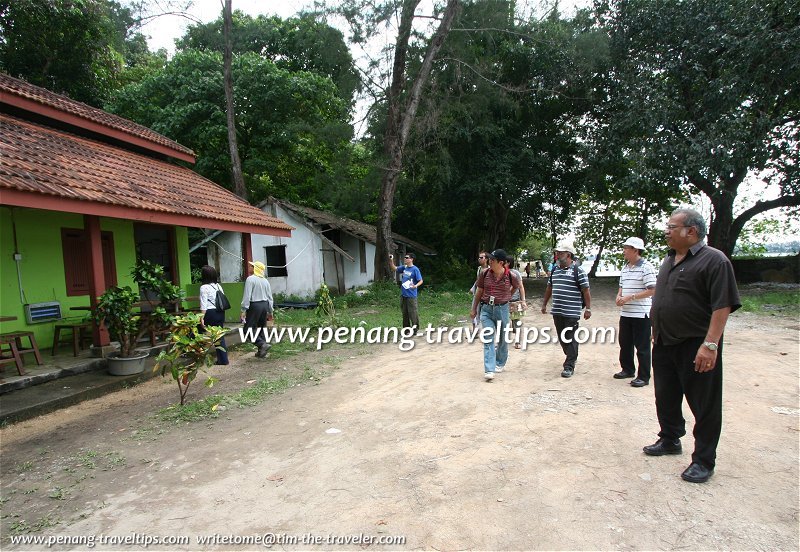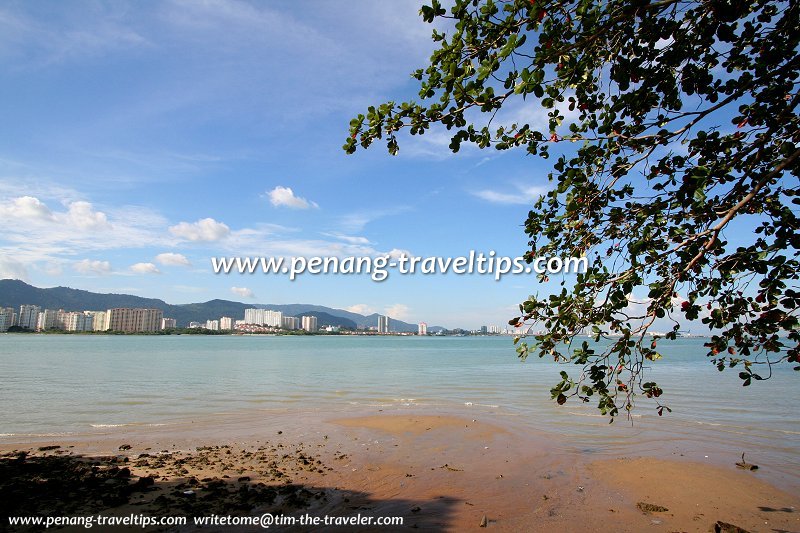Pulau Jerejak is the biggest of the many islands around the immediate vicinity of Penang Island. It is also the most immediately visible to visitors arriving in Penang, whether by air or by road. Motorists approaching Penang island by thePenang Bridge will see Pulau Jerejak on their left (south) side.
Although most people of Penang will be able to point out Pulau Jerejak, few have actually stepped onto the island. This isn't surprising, considering that for much of modern history, the island was out of bounds to all but a lucky few, and quite a number of unlucky few.
From the first page of Penang's modern history, Pulau Jerejak was there. Captain Francis Light had in fact arrived in Pulau Jerejak ahead of setting foot on Penang island. Even then, the island was already known as Pulau Jerejak among the local fishermen.

Pulau Jerejak had even attracted the attention of Colonel Arthur Wellesley who later became the 1st Duke of Wellington, defeating Napolean in the 1815 Battle of Waterloo. (By the way, Province Wellesley was named after Richard Wellesley, the Governor-General of India at that time, and not after Arthur Wellesley. See British Governors of the Straits Settlement.Butterworth was named after William John Butterworth, the Governor of the Residency of the Straits Settlement from 1843-1851). At that time, the British were very keen to establish a foothold on the Straits of Malacca, and Penang appeared to be an attractive choice. (Later, however, they learned that its located was too far north, and a new post was established in Singapore).
In 1797, Wellesley had proposed Pulau Jerejak as the possible site for Fort Cornwallis. His idea of establishing a military post in Pulau Jerejak was to offer protection to a new township called Jamestown, which was to be set up in present-day Bayan Baru. Earlier in 1794, there was an outbreak of malaria caused most likely by the clearing of the jungle to establish George Town, claiming many lives, including Francis Light himself. Thus, Wellesley was not in favour of the site for Fort Cornwallis to be on Penang island.
Unfortunate for Pulau Jerejak, the auspicious possibility never did materialise. George Town's port has begun to turn a profit, and soon it became unnecessary to establish Jamestown, and with that, neither was it necessary to have Fort Cornwallis on Pulau Jerejak. What it did become, was a place to unload society's untouchables. The catalogue of miserable souls that have made - or been forced to make - Pulau Jerejak home included lepers, tubercolosis patients, prisoners, and addicts.

Exploring the abandoned servant quarters of the prison in Pulau Jerejak, with Penang Deputy Chief Minister (29 November 2009)
It started as a leper's colony from the early part of the 20th century until the Second World War. When the colony was moved to Sungai Buluh, Selangor, the island became a quarantine area for contagious diseases. It is believed, but not confirmed, that Pulau Jerejak was used by the Germans as a submarine base during the Second World War. There is a grave marker to two soldiers from the Russian ship Zemschug who were killed when the German ship Emden sneaked into Penang Harbour in 1914 and attacked. You can read more about it on the AsiaExplorers page on the Cenotaph, http://www.asiaexplorers.com/malaysia/cenotaph_penang.htm. There are however cemeteries all around the island for those who succumb to their sufferings, whether in the jail cells or wards.
After the Second World War, there was widespread cases of tubercolosis in Malaya, and once again, Pulau Jerejak became the convenient choice to set up a contagious disease hospital and sanatorium. And finally, to complete the catalog, Pulau Jerejak was also used as a penal colony. The Pulau Jerejak Rehabilitation Centre began operations on 12 June, 1969, and was in use right up to August 1993. The "pioneer detainees" were those involved in the May 13, 1969 riots. Later arrivals included hardcore criminals and those in the "narcotics industry".
Plans to turn Pulau Jerejak into an eco-tourism destination began in 2000, and once the Department of Environment approved the Environmental Impact Assessment on the island, plans moved into high gear. On January 17, 2004, Pulau Jerejak Resort & Spa opens for business. It covers the area once occupied by the lepers colony. All unbecoming structures of the colony were swept away, and the only possible remain from that unsightly era was a well - and even that, is now cleaned and beautified. Most of the original trees are allowed to stand where they were, and terrain neatly spruced up.

View of Penang Island from Pulau Jerejak (29 November 2009)
At the time of writing (2004), the resort is in operation for less than a month, and most of the planned activities are still on the drawing board. Those in operation included the teambuilding park, and facilities for sports like wall climbing and mountain biking. Guided tours are available to the heritage sites such as the penal colony and the tubercolosis wards. There are banquet halls and special function rooms to cater for company meetings. A suspension bridge is being built over a ravine where participants can do "flying-fox". An area is being cleared for a camping site, while archery and paintball wargames are on the way. Another coming attraction is a spa offering massages, facials, aromatherapy and body treatments. A petting zoo is also planned, with a menagerie of goats, geese, rabbits and other tame animals.
How to go to Pulau Jerejak
The easiest way to reach Pulau Jerejak is to take the Jerejak Resort ferry. It goes between the Penang Island Jerejak Jetty and the Jerejak Resort Jetty. As the ferry is run by the Jerejak Resort. For details on the schedule and fare, please go to thePenang Island Jerejak Jetty page.
View Jerejak Ferry in a larger map
No comments:
Post a Comment